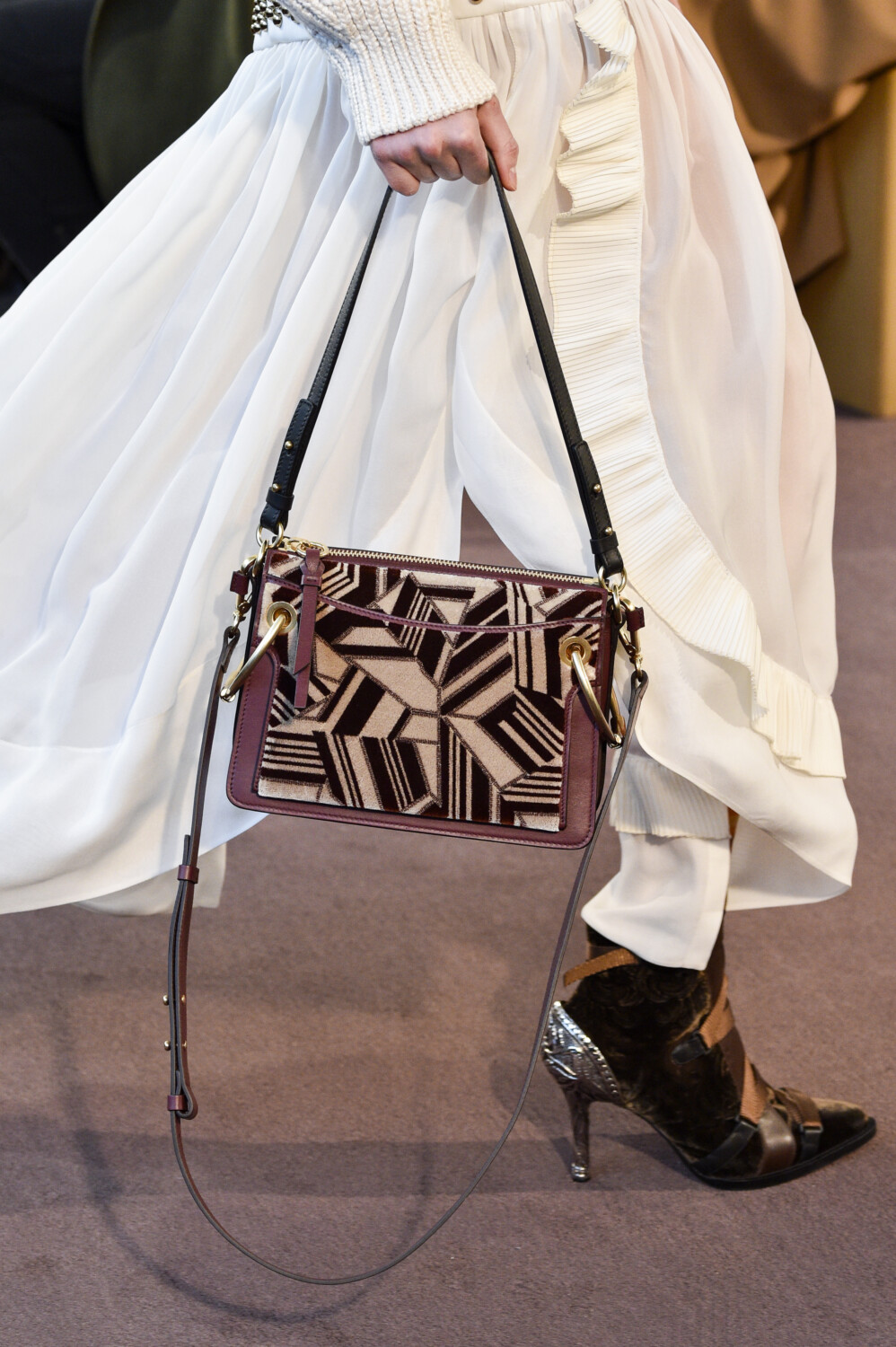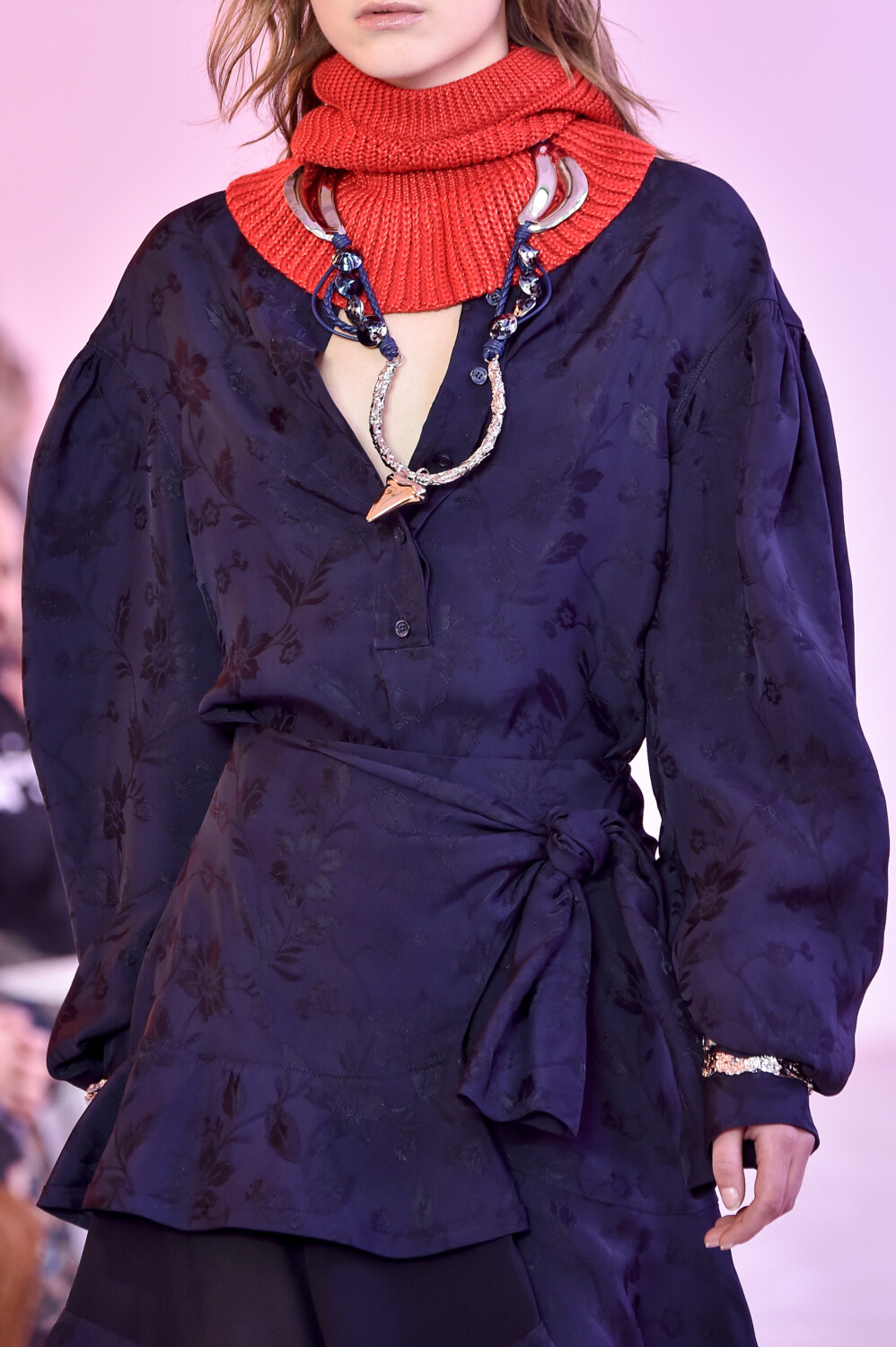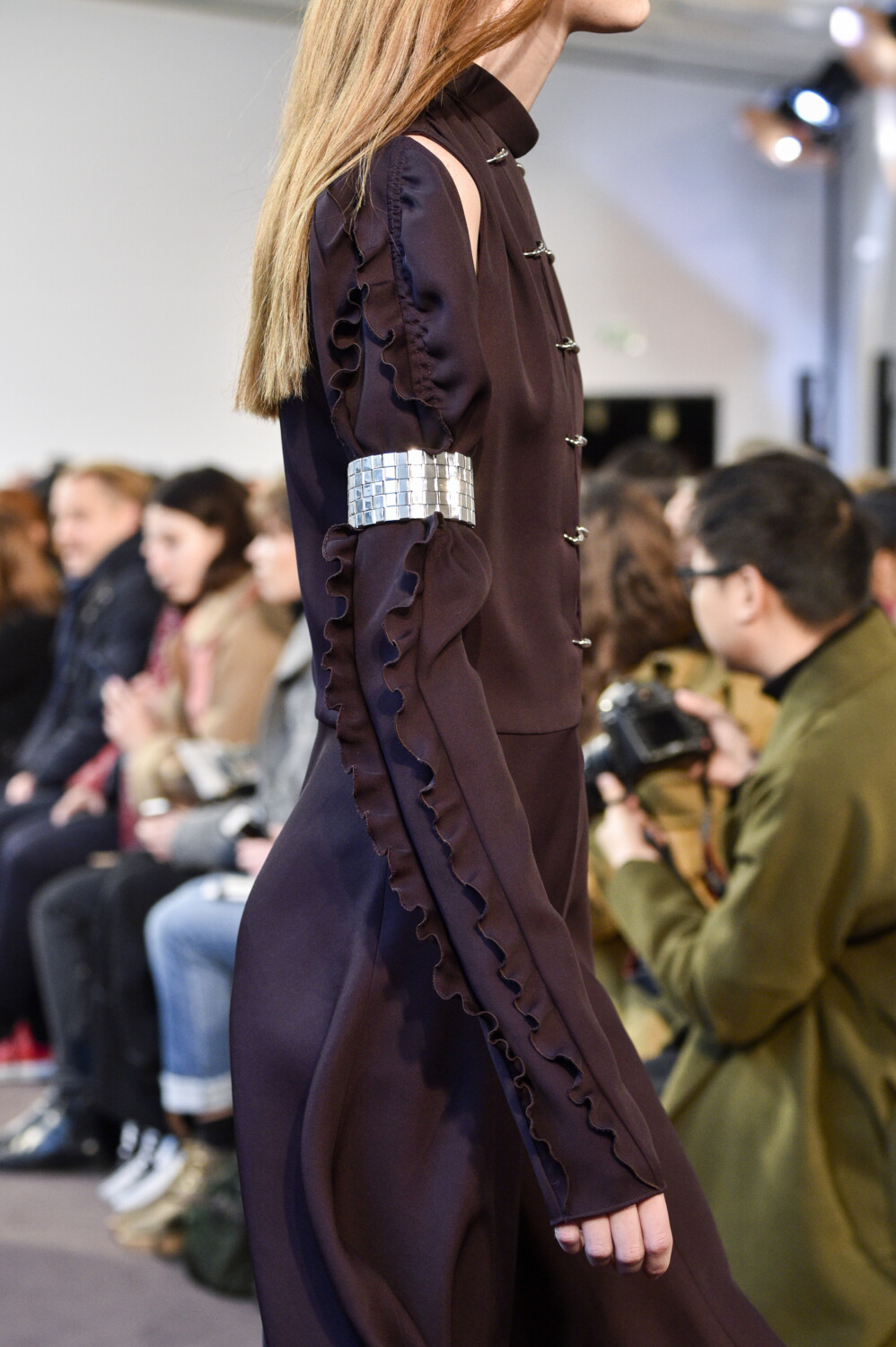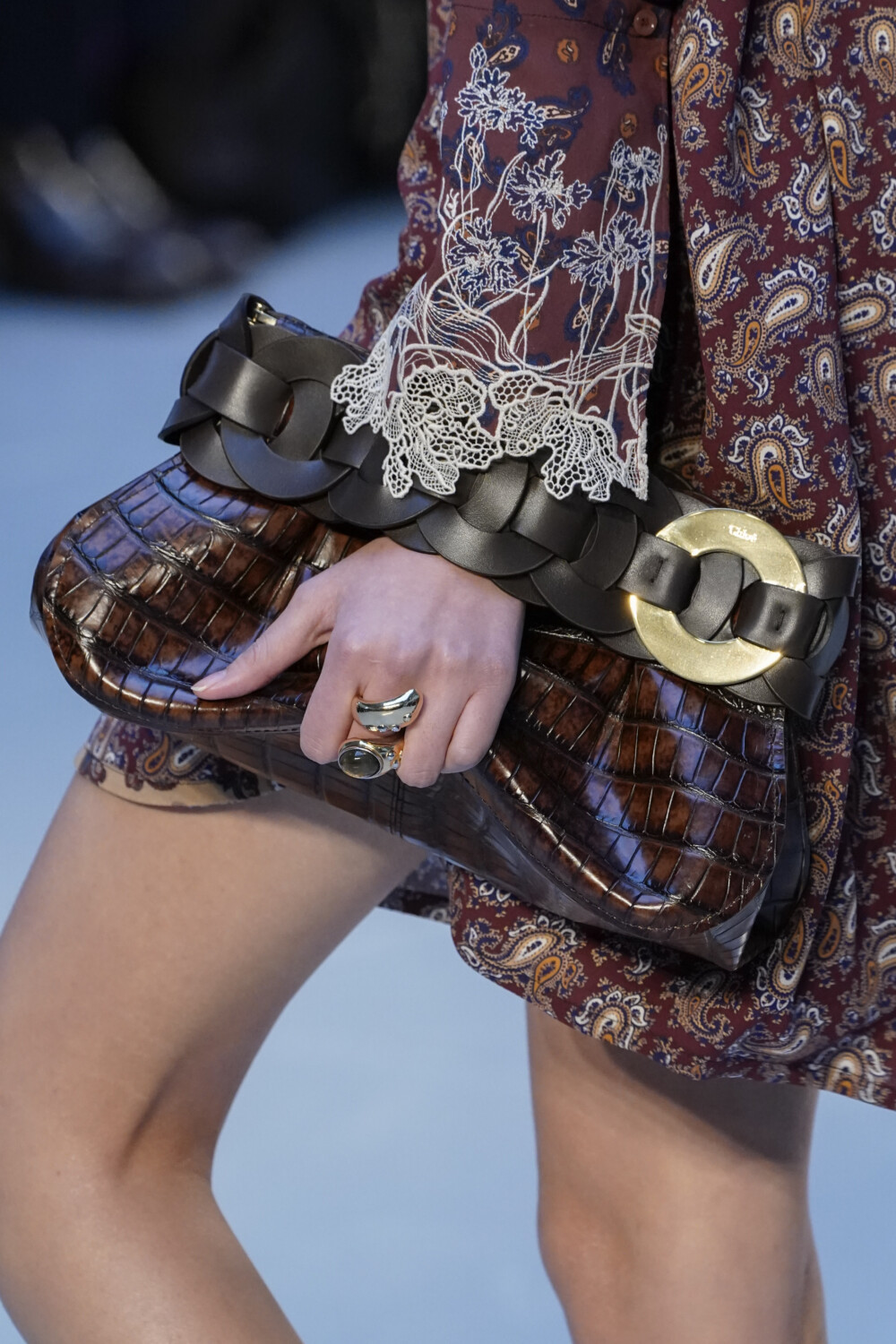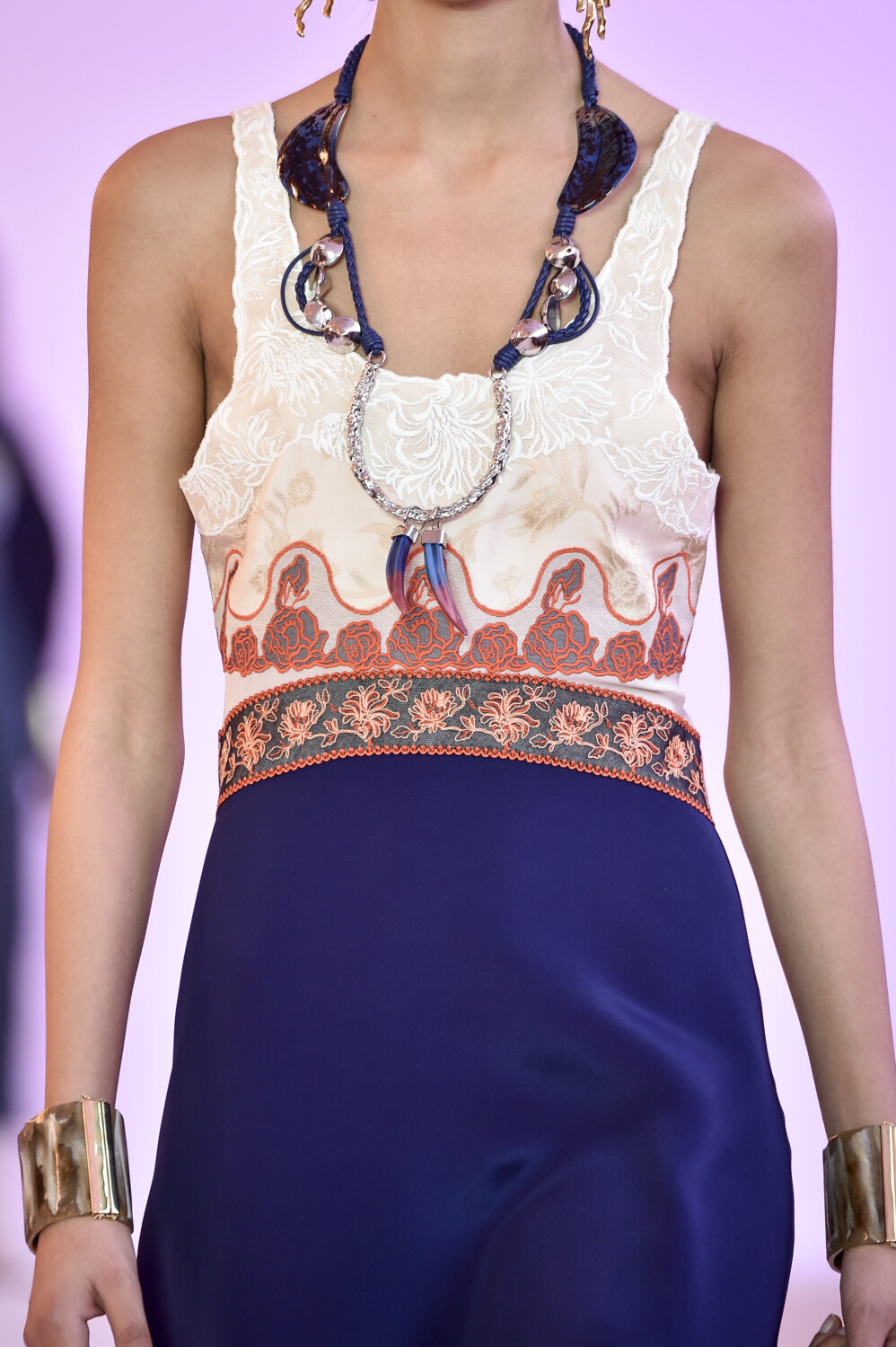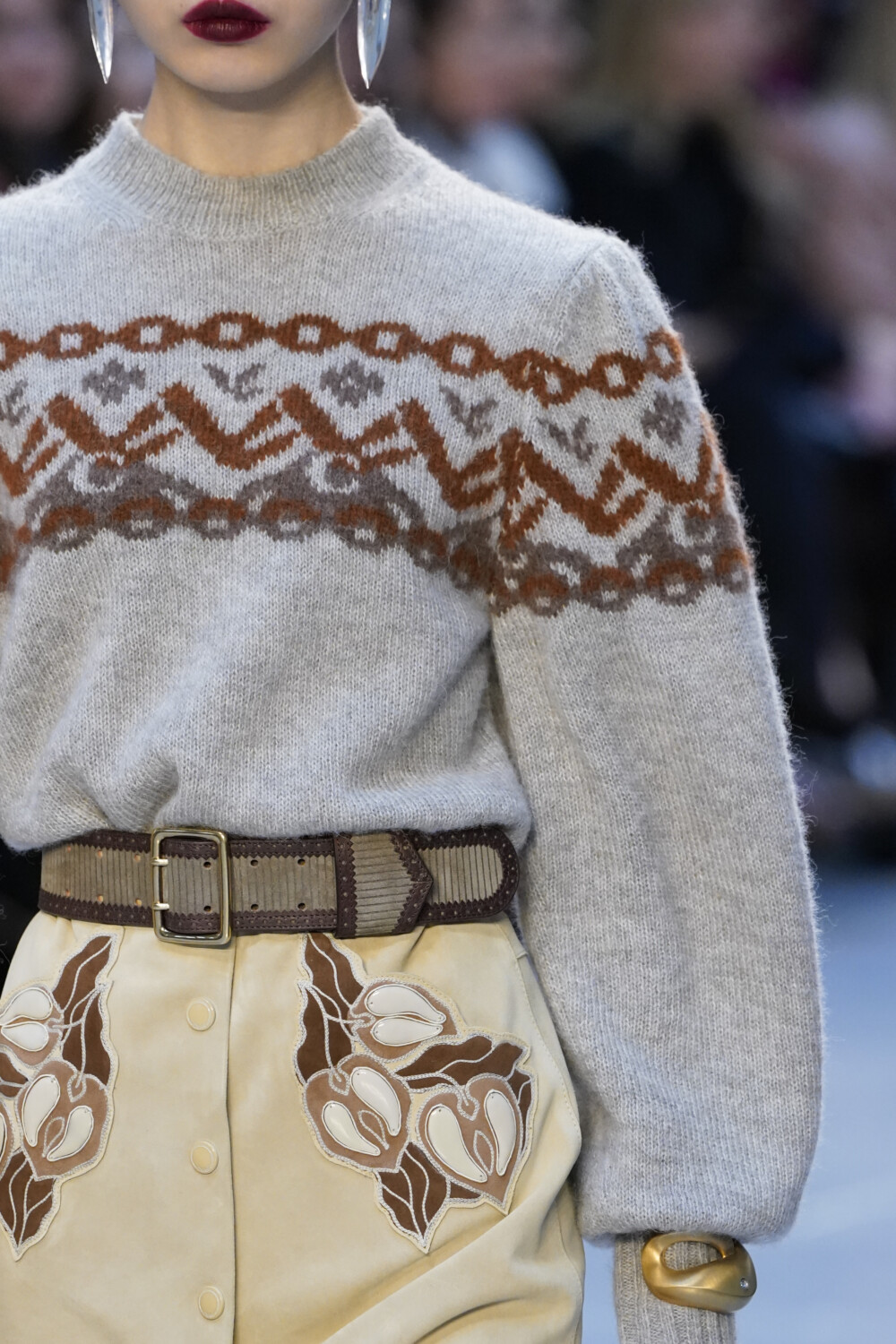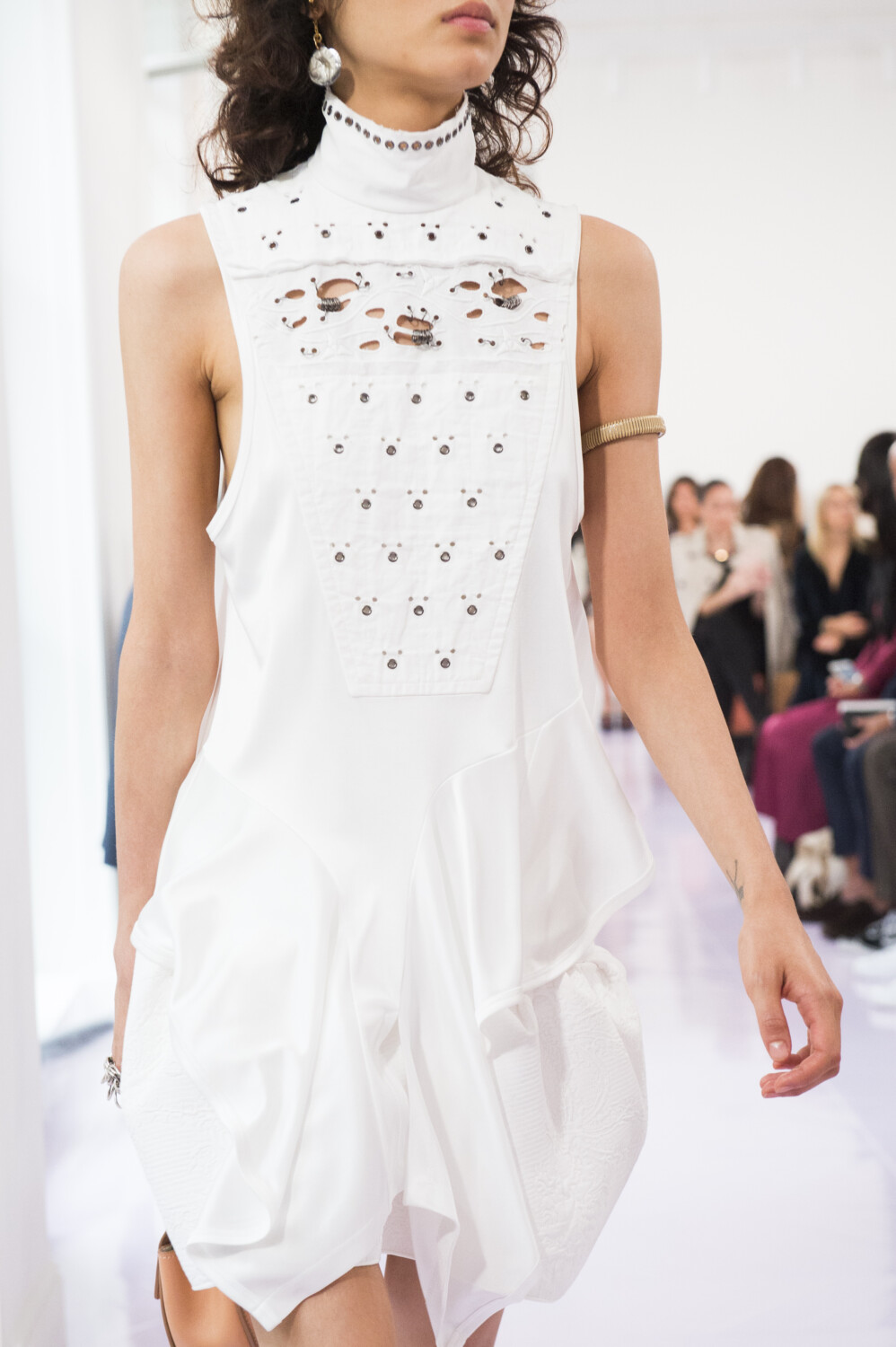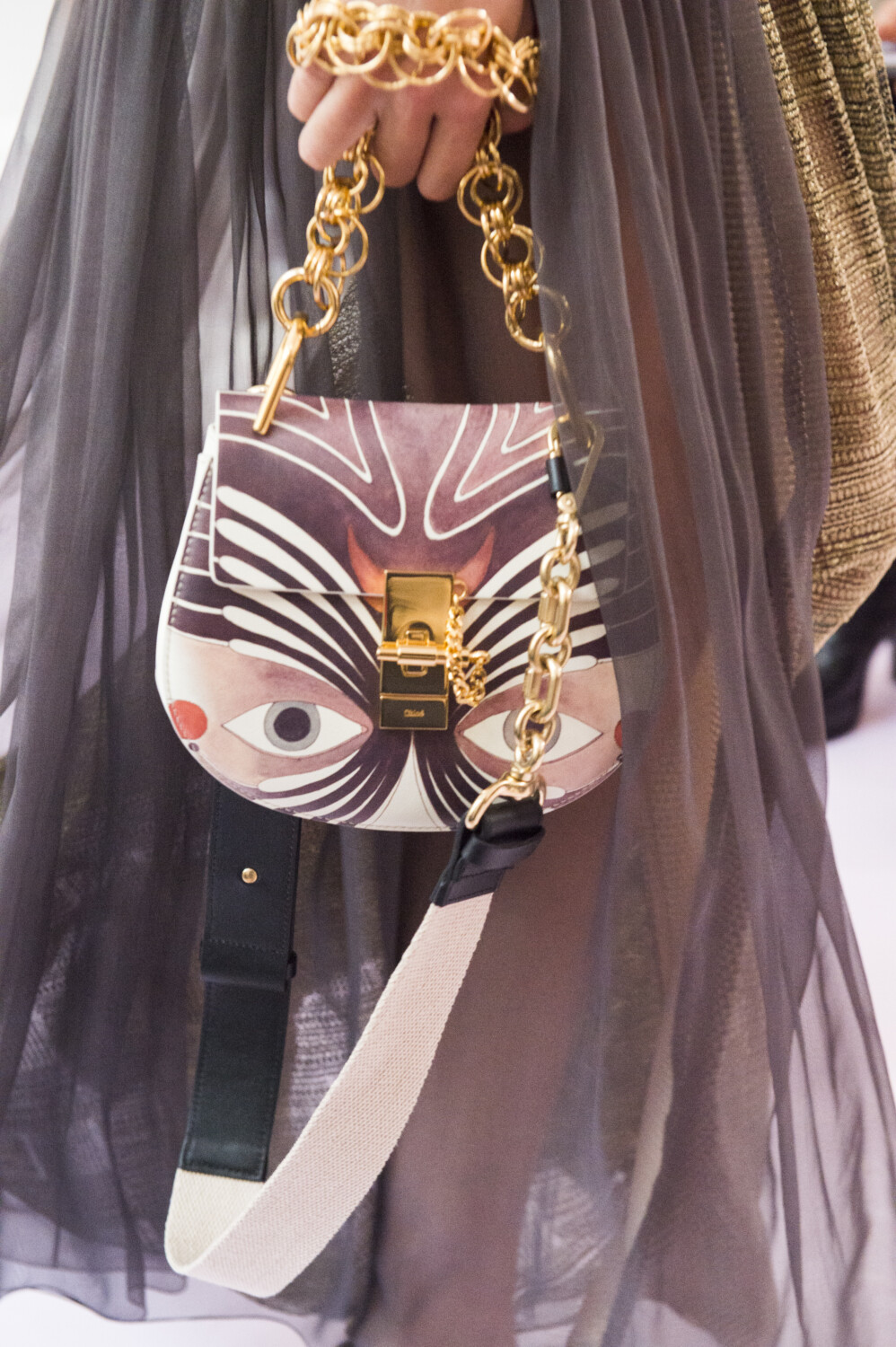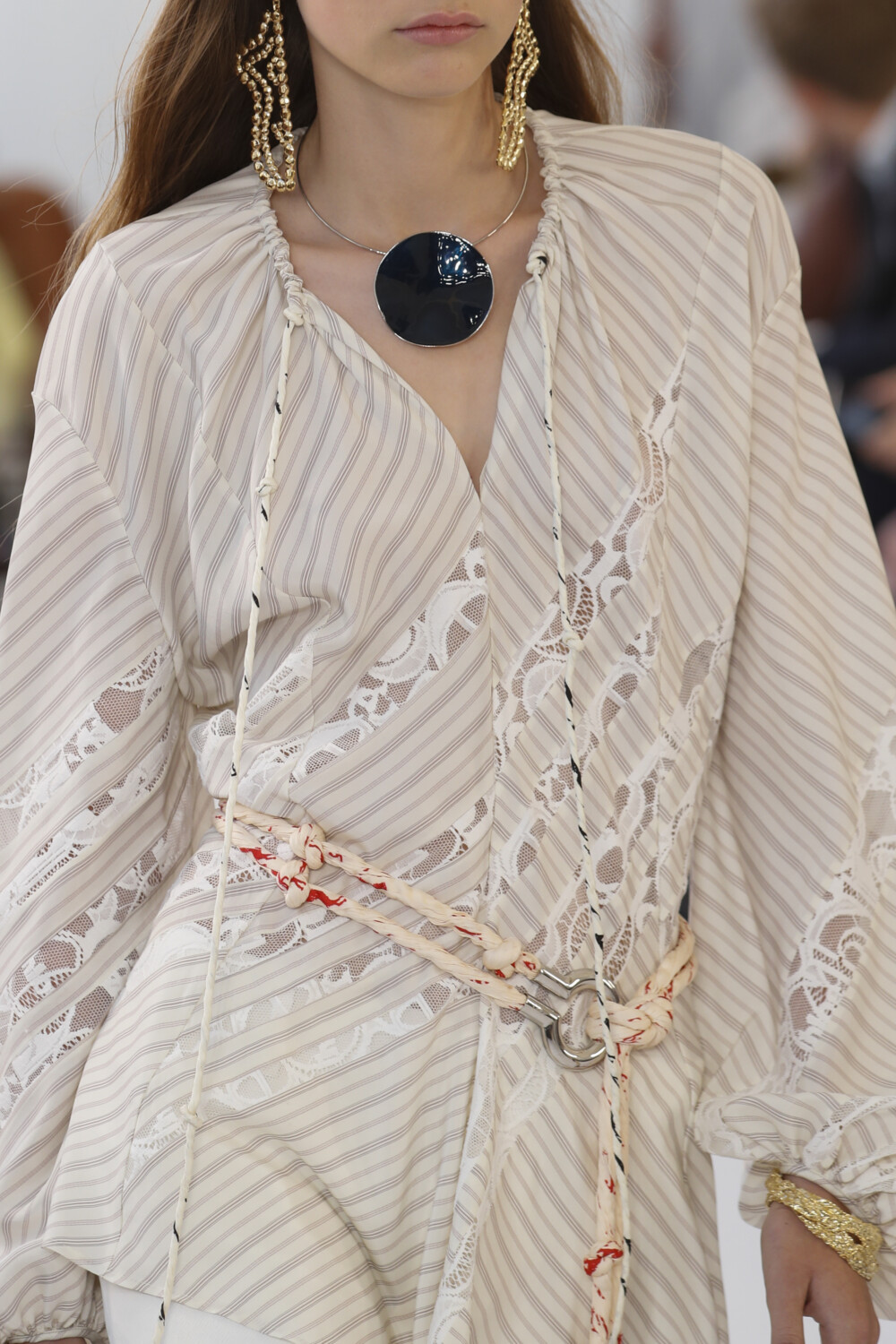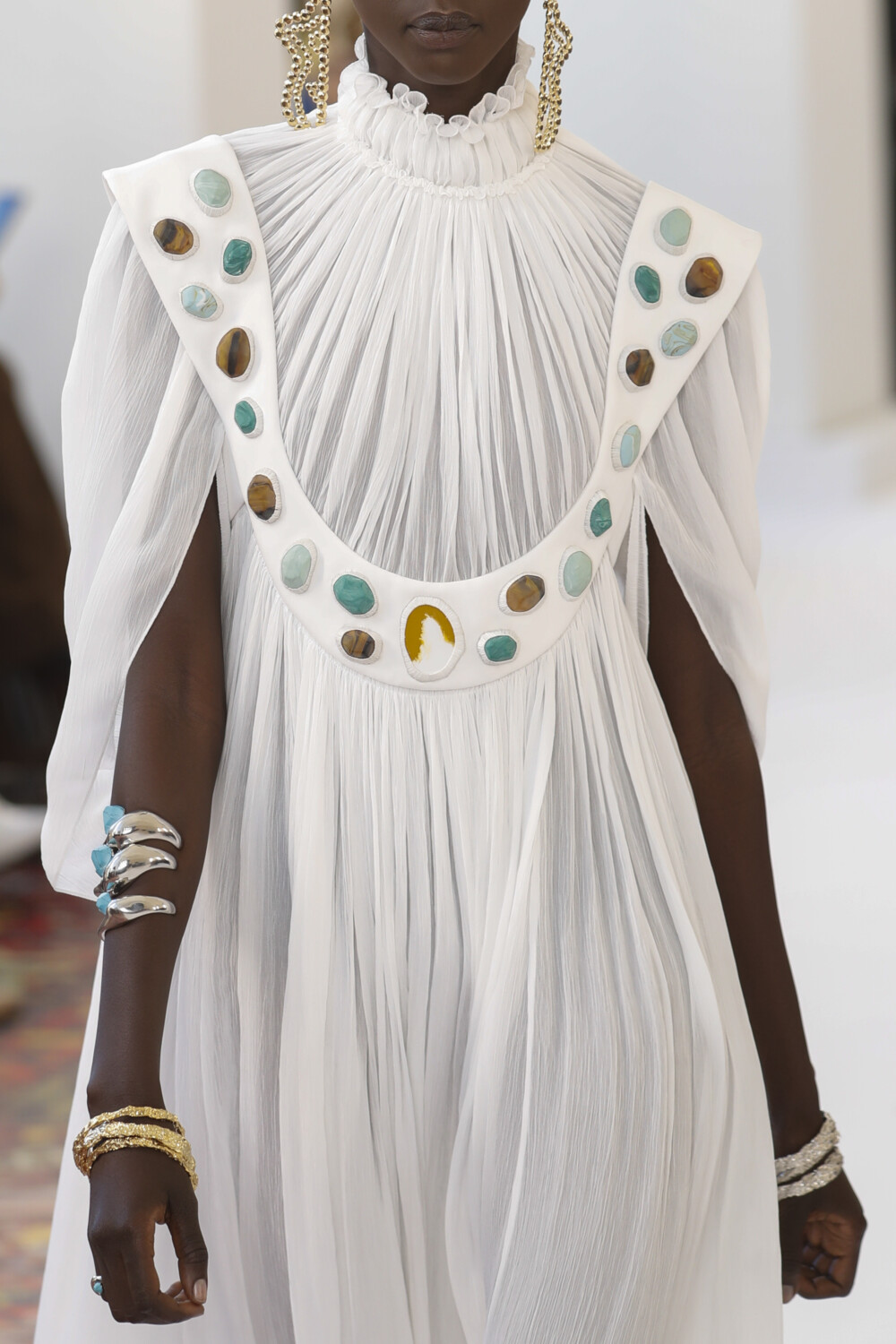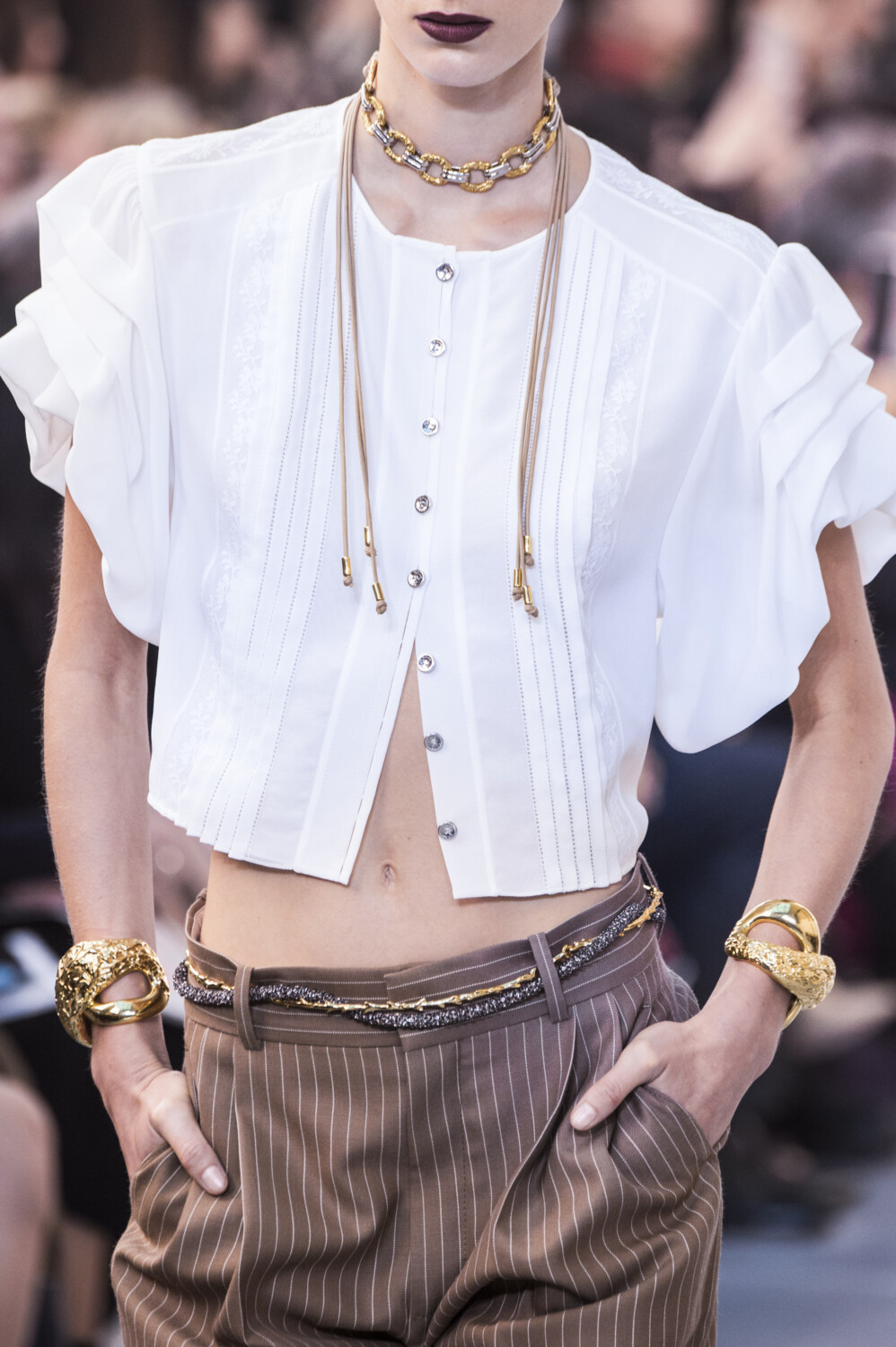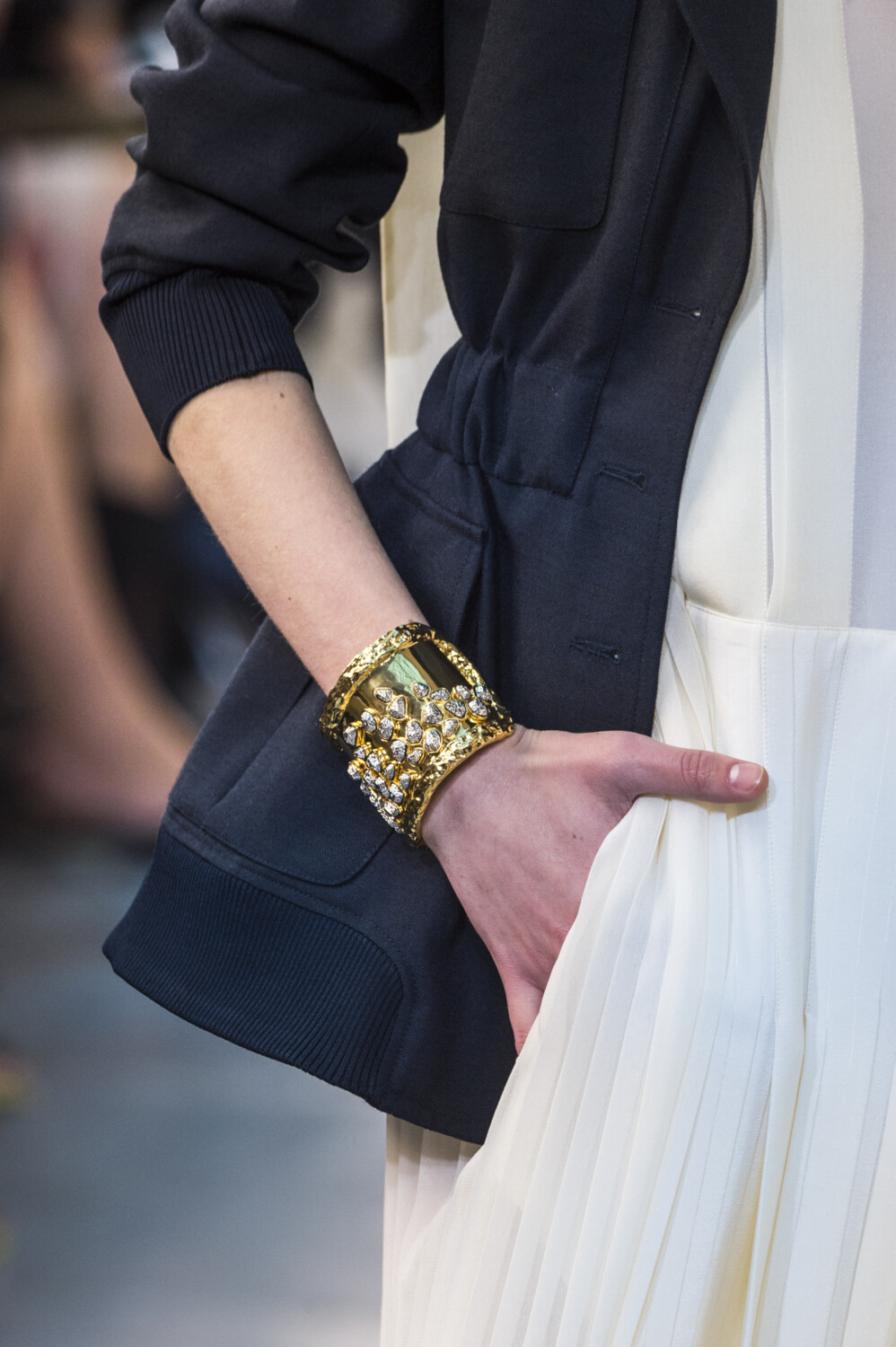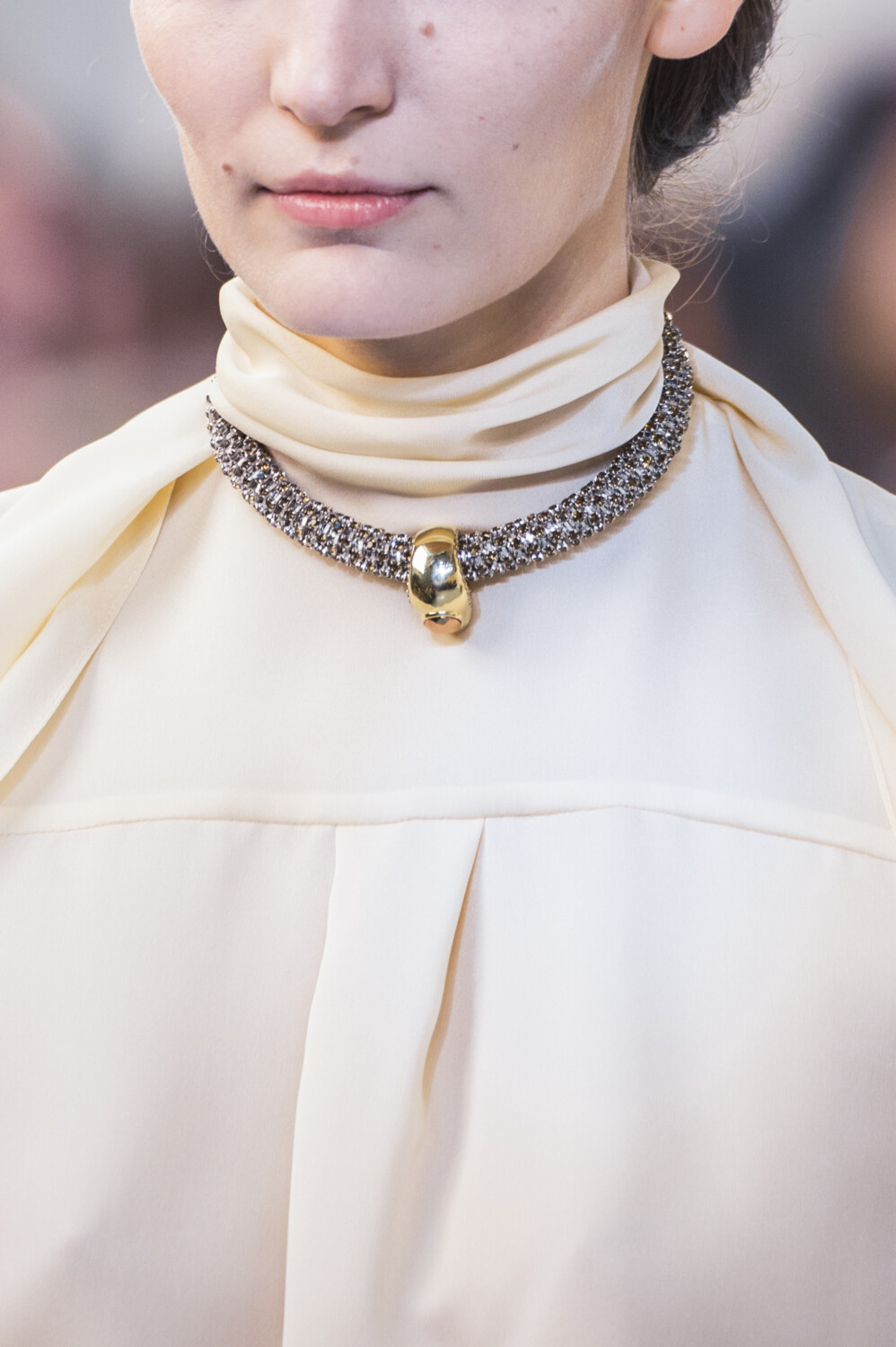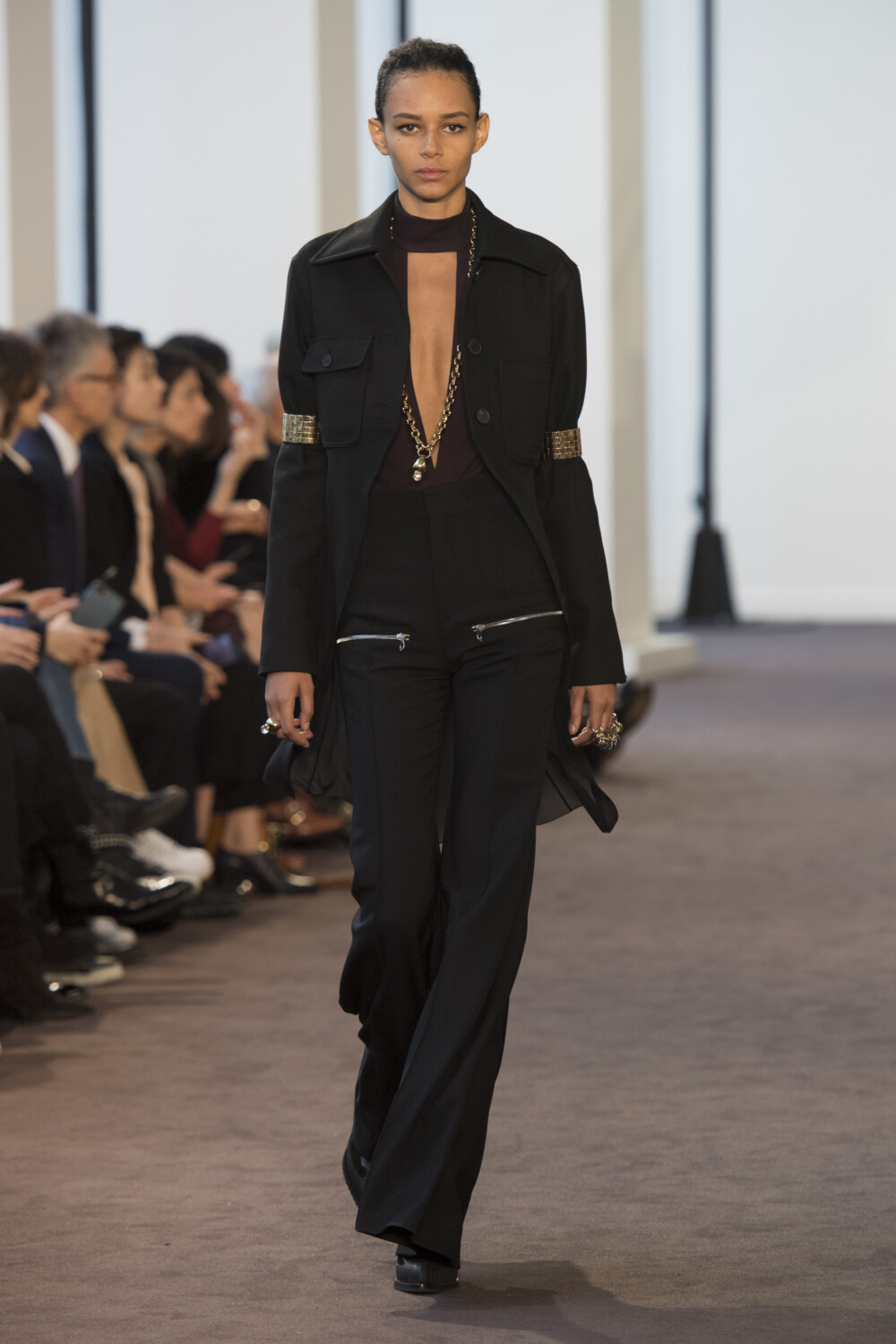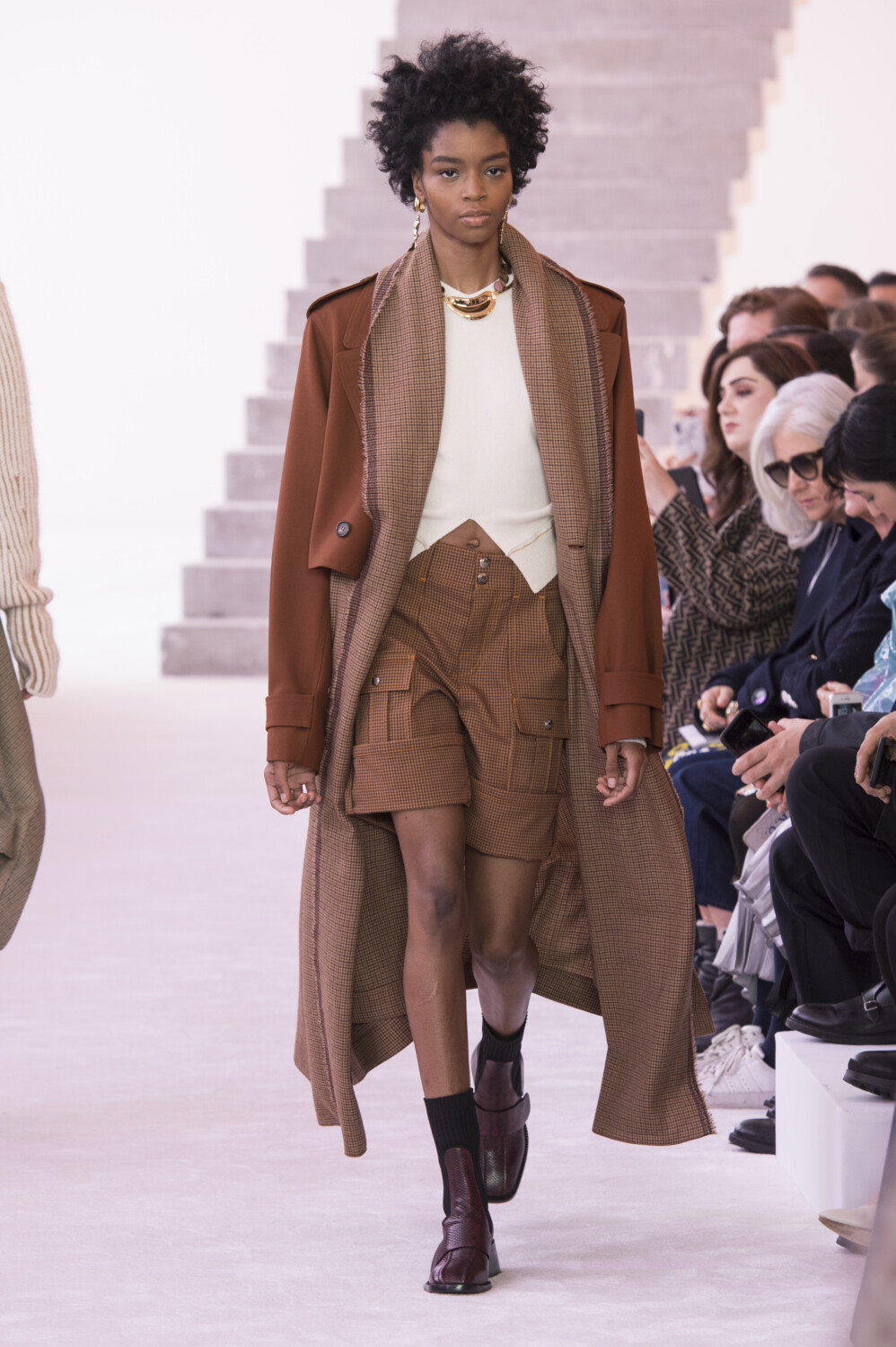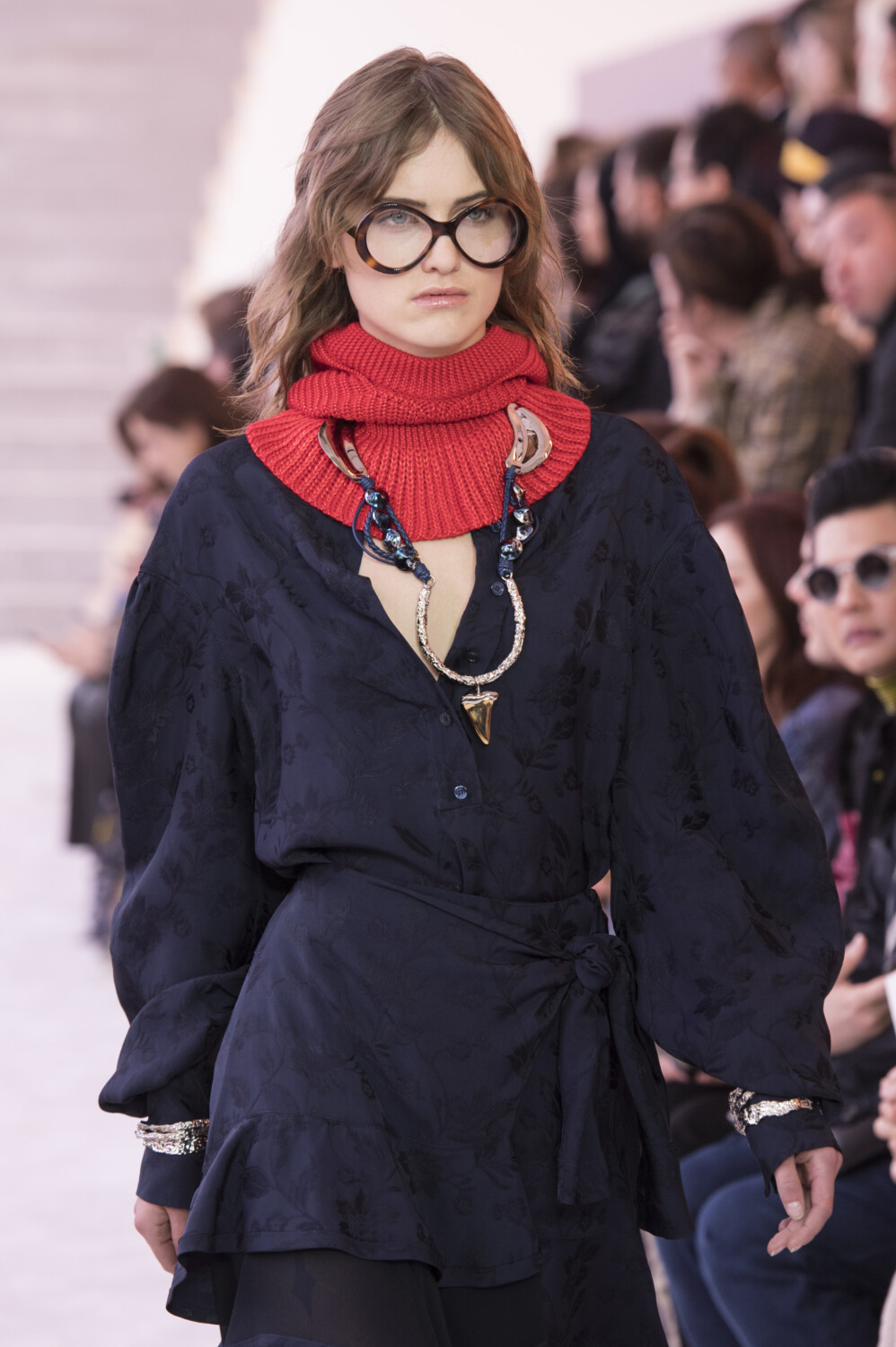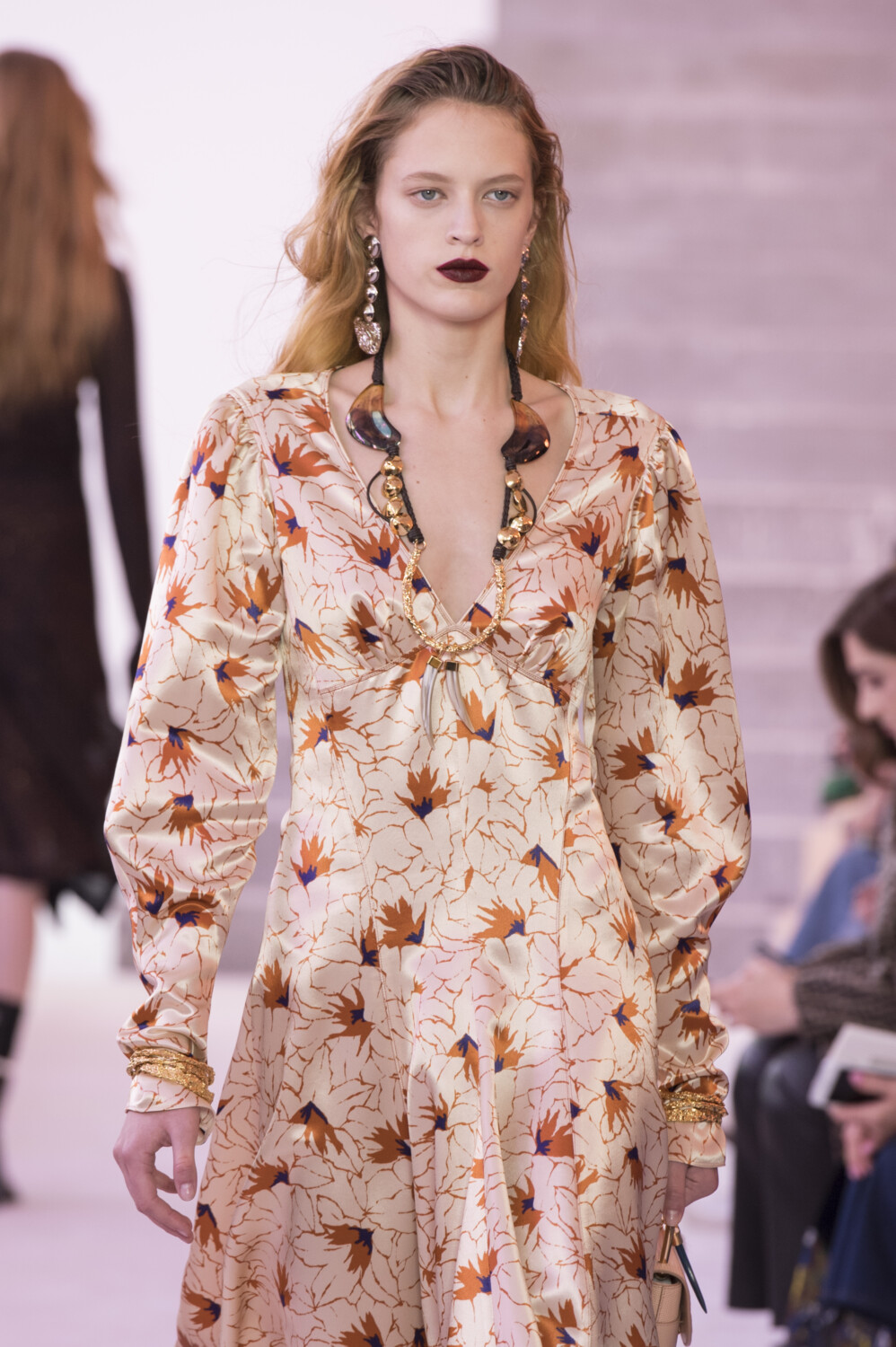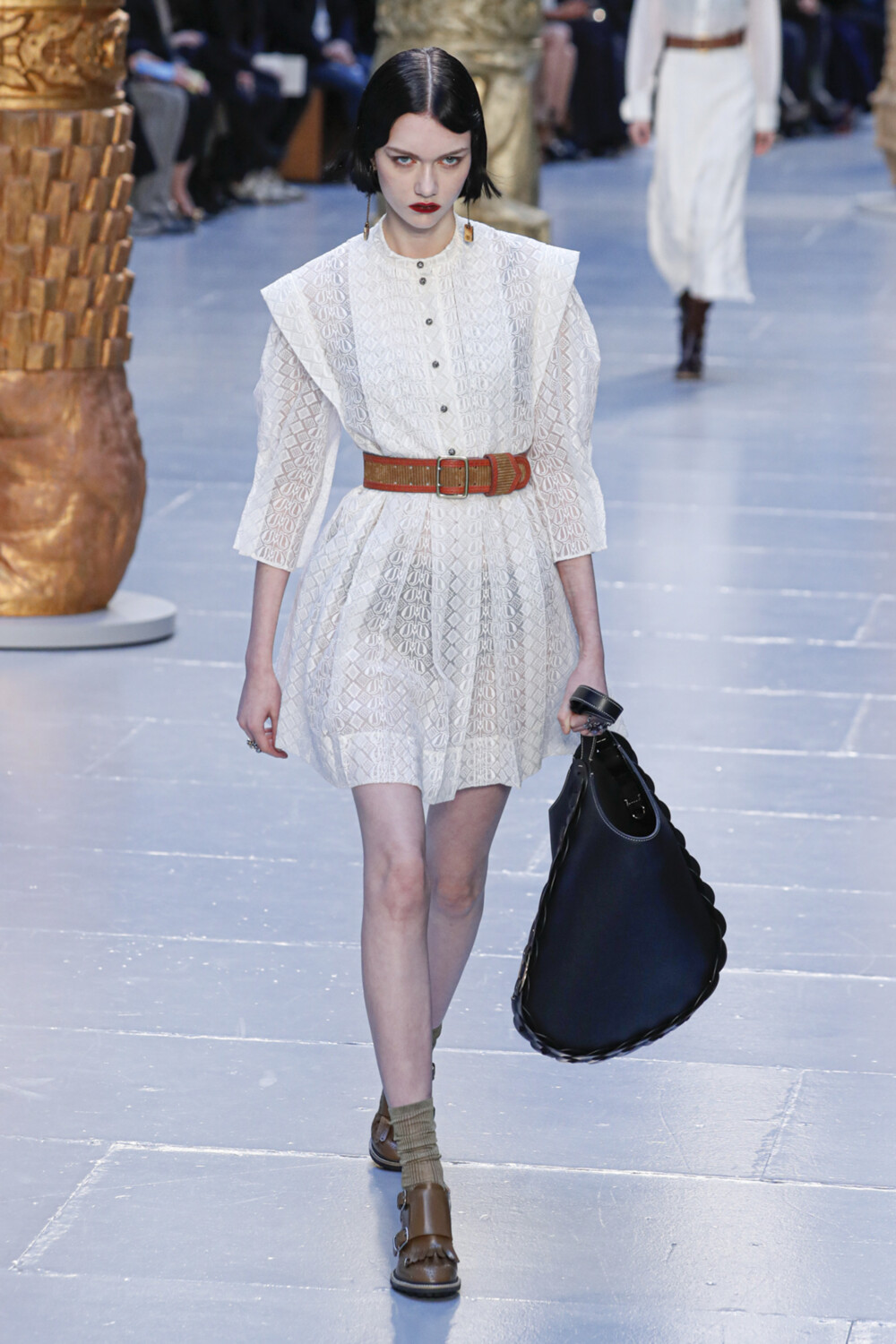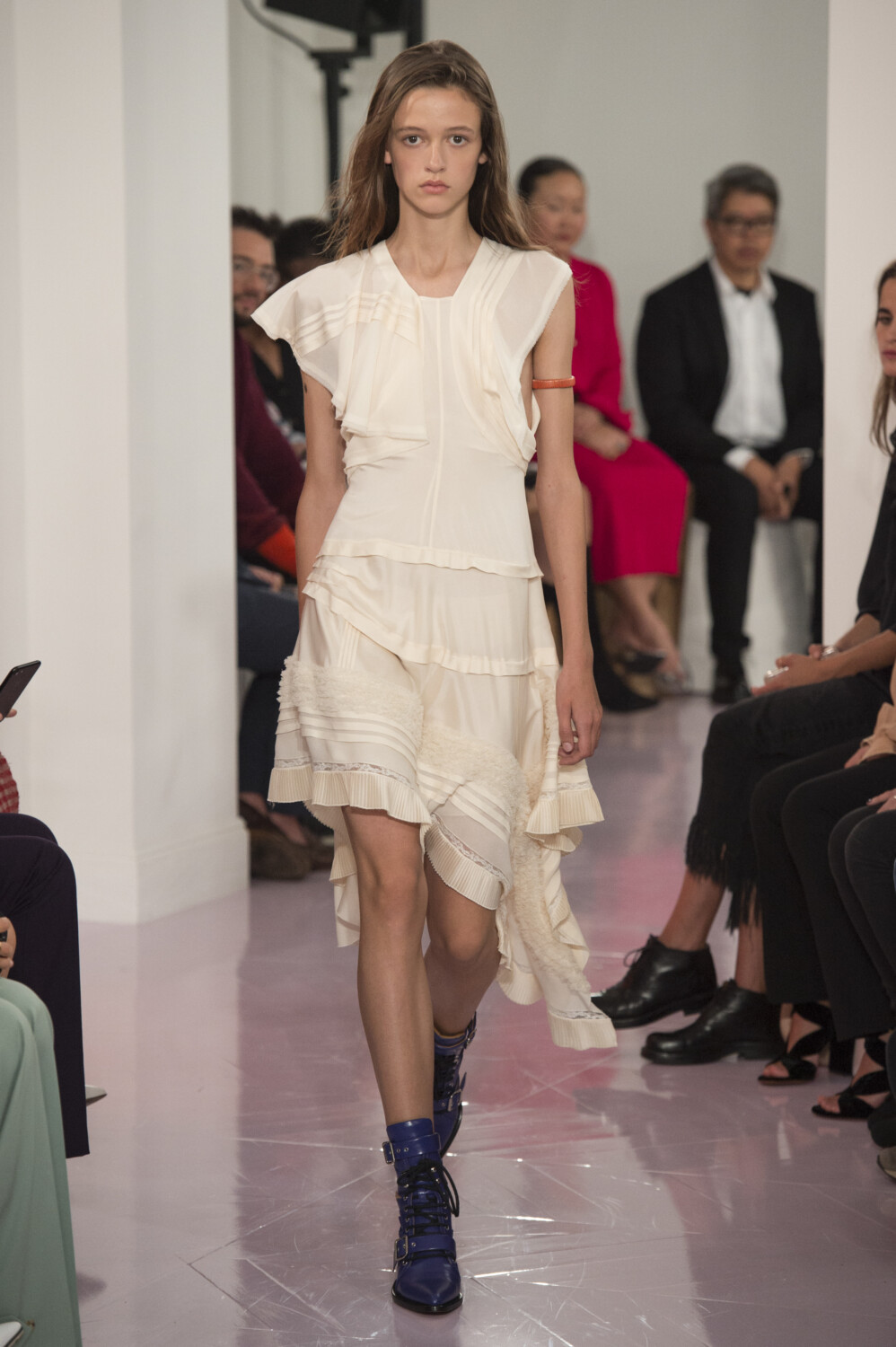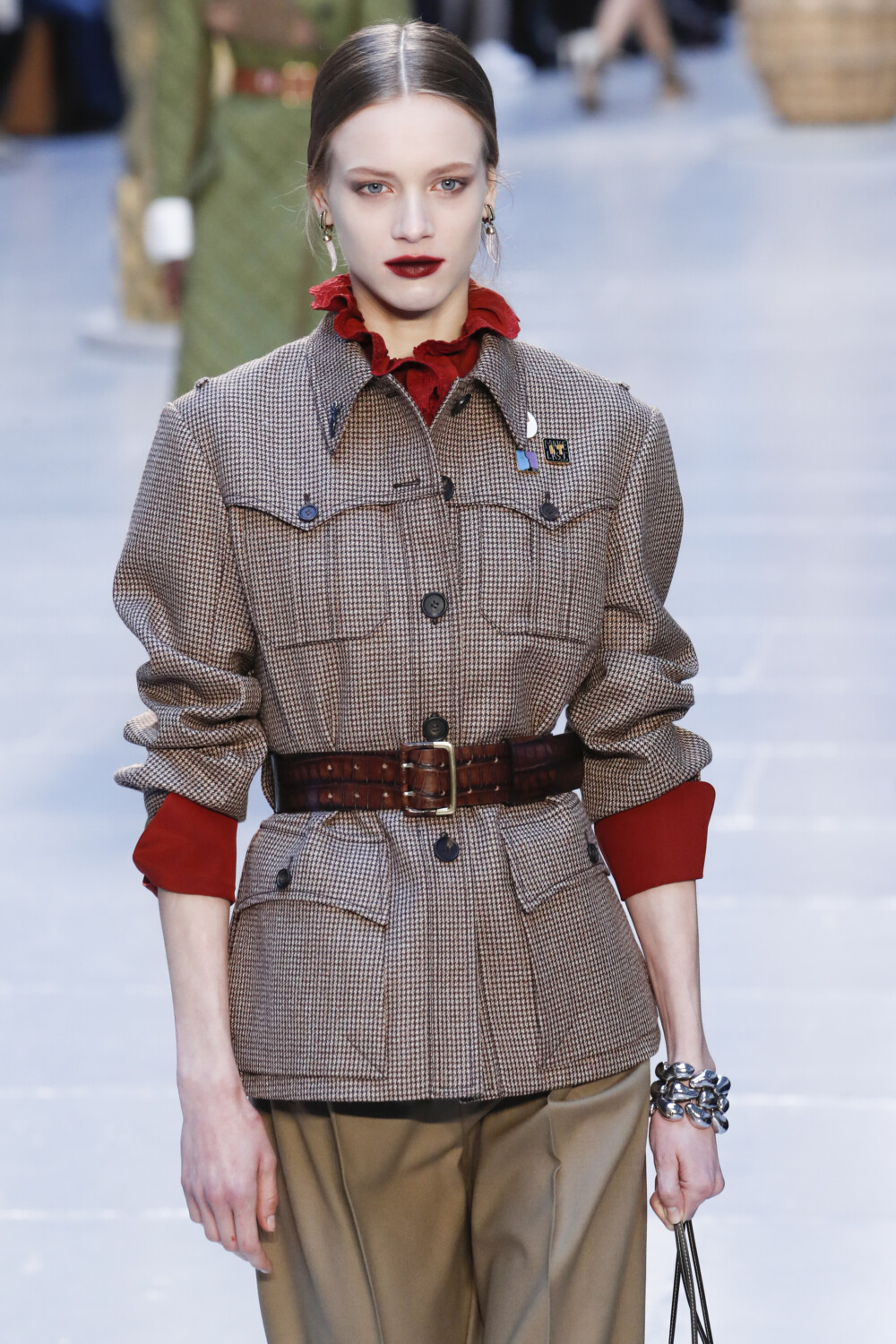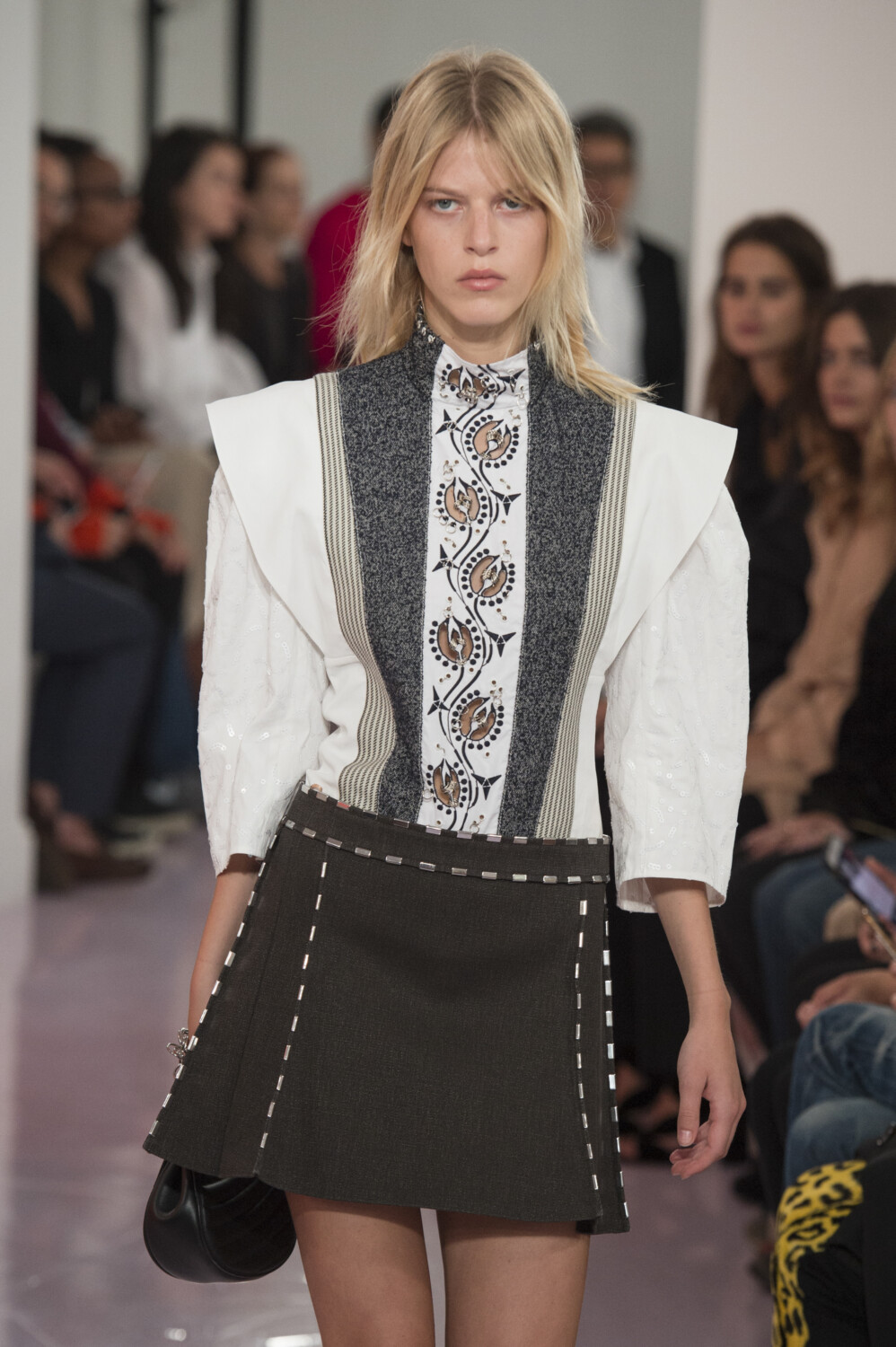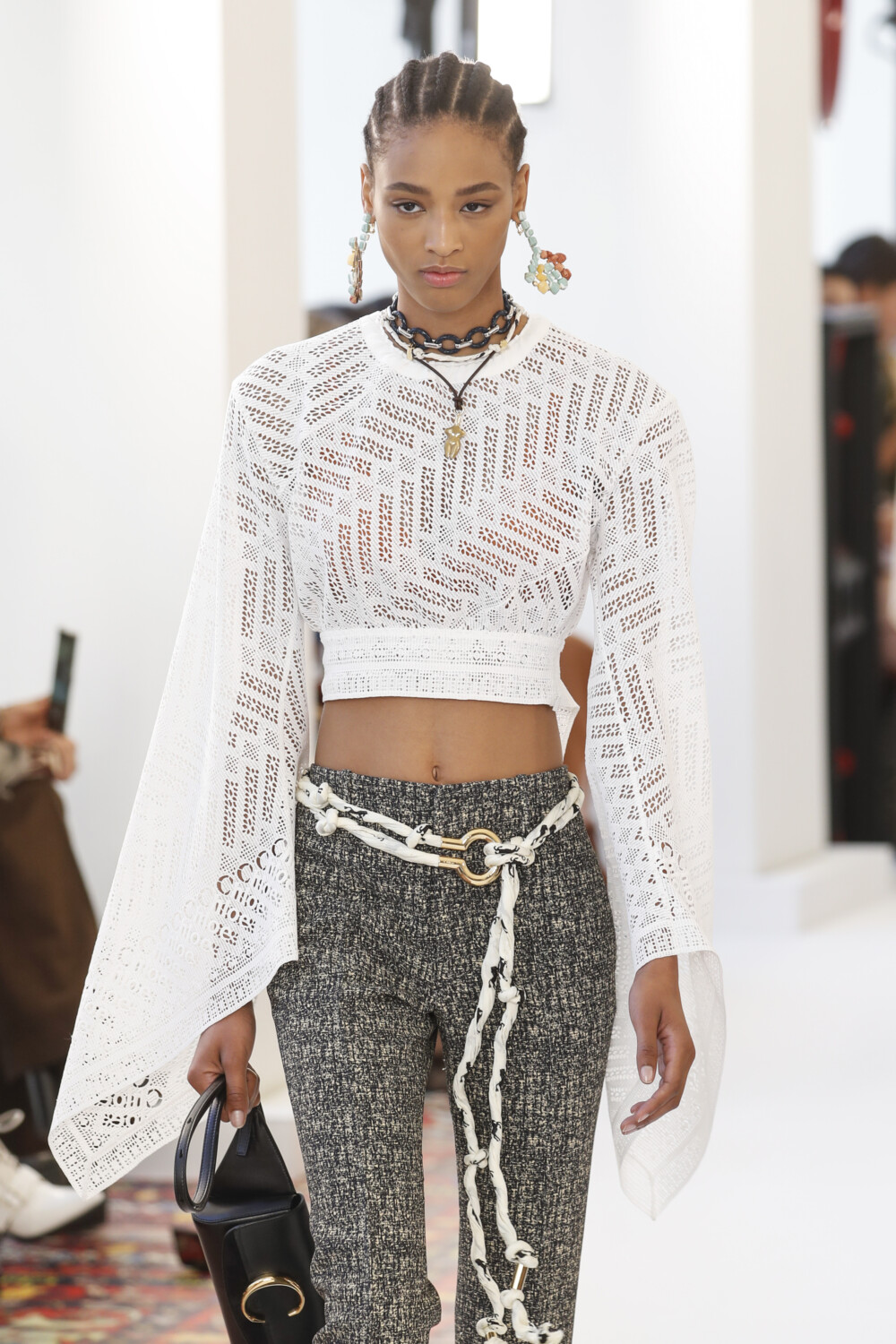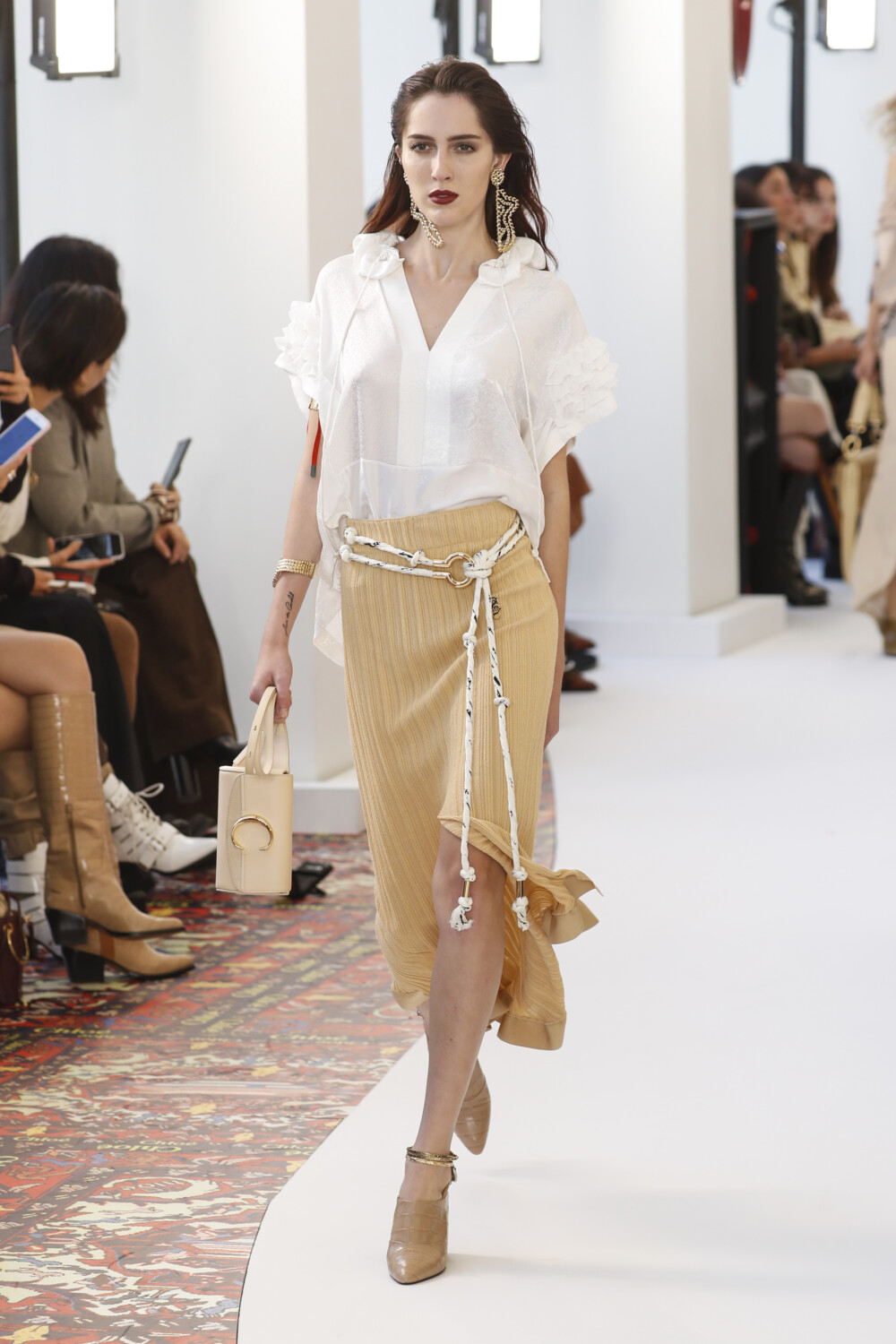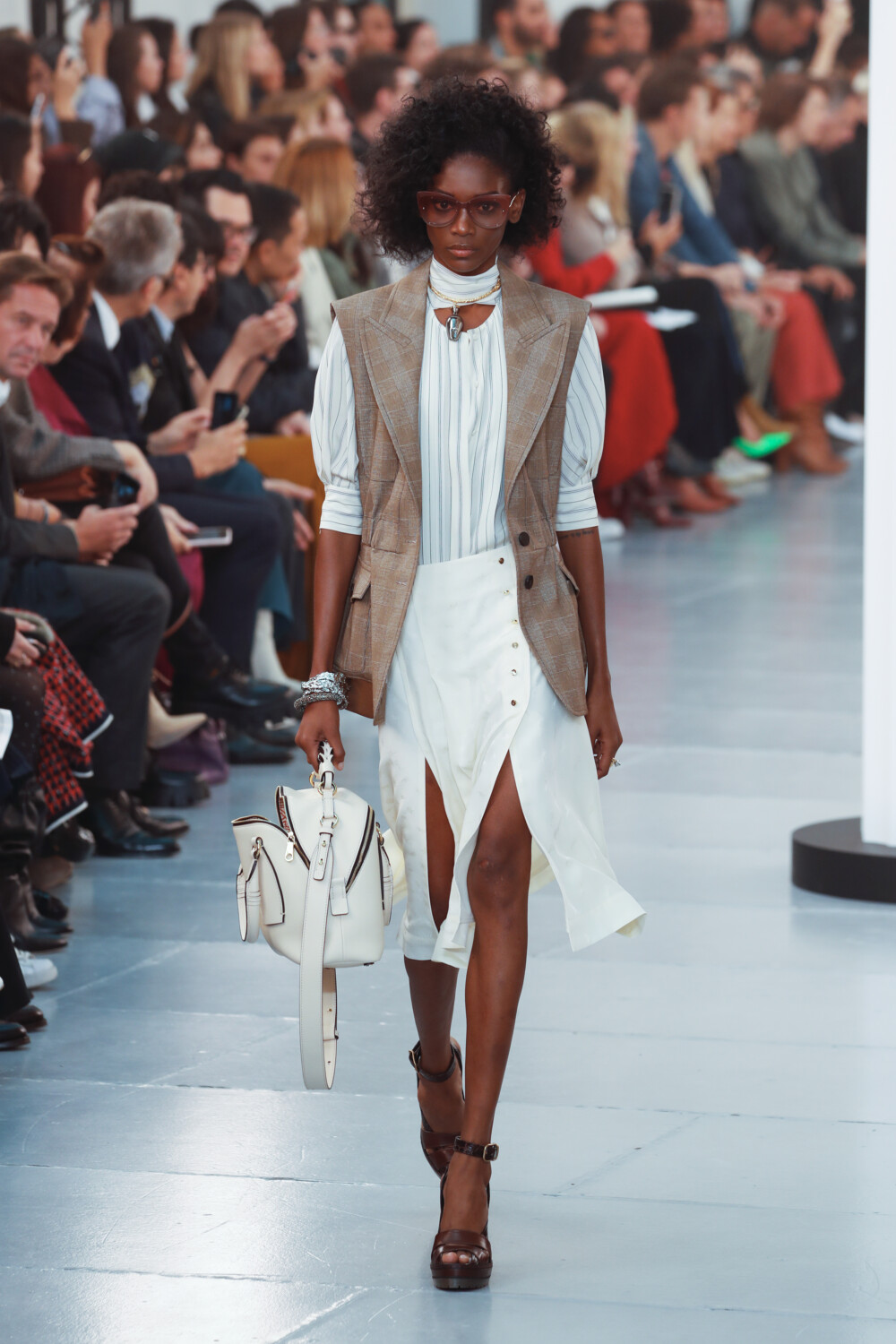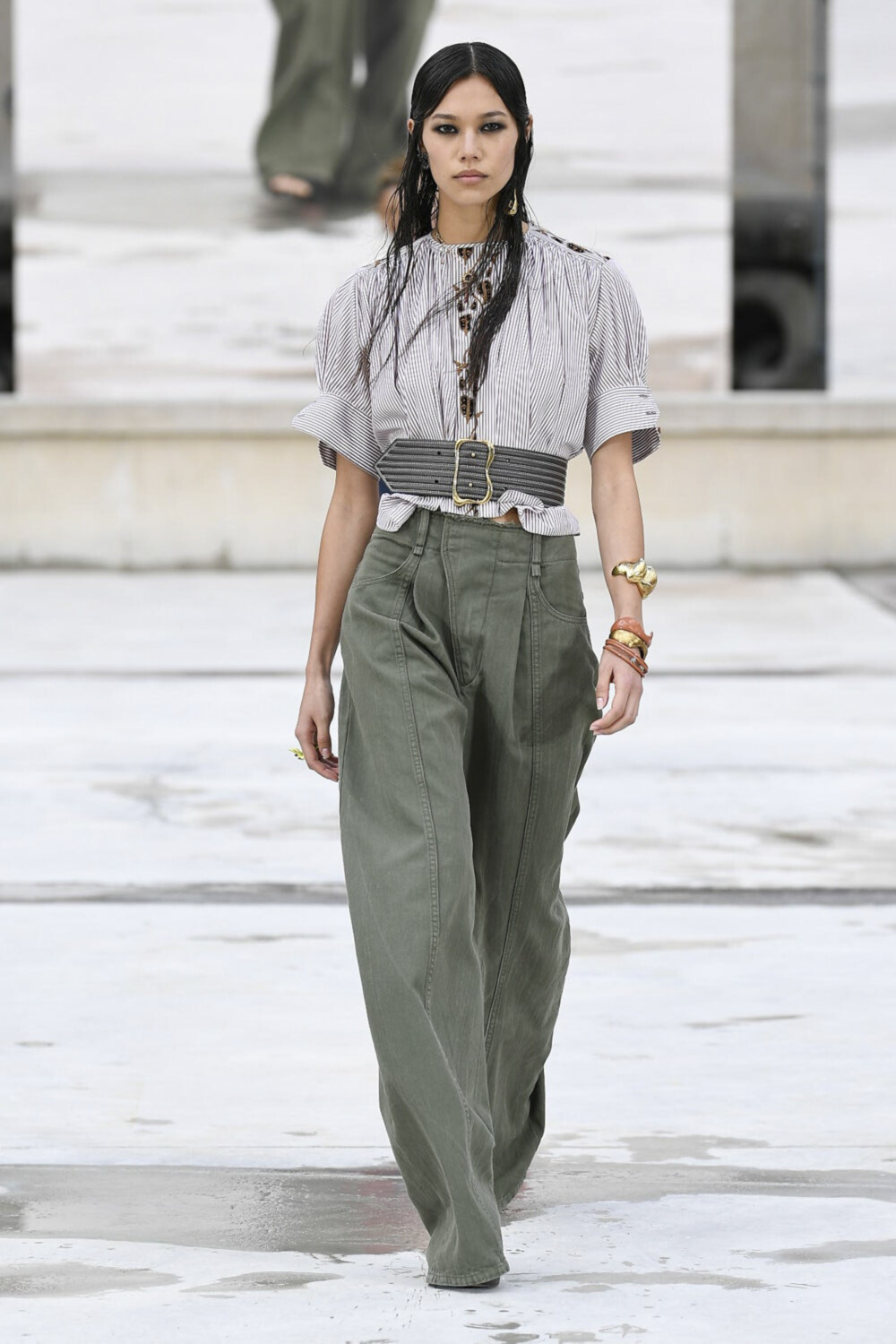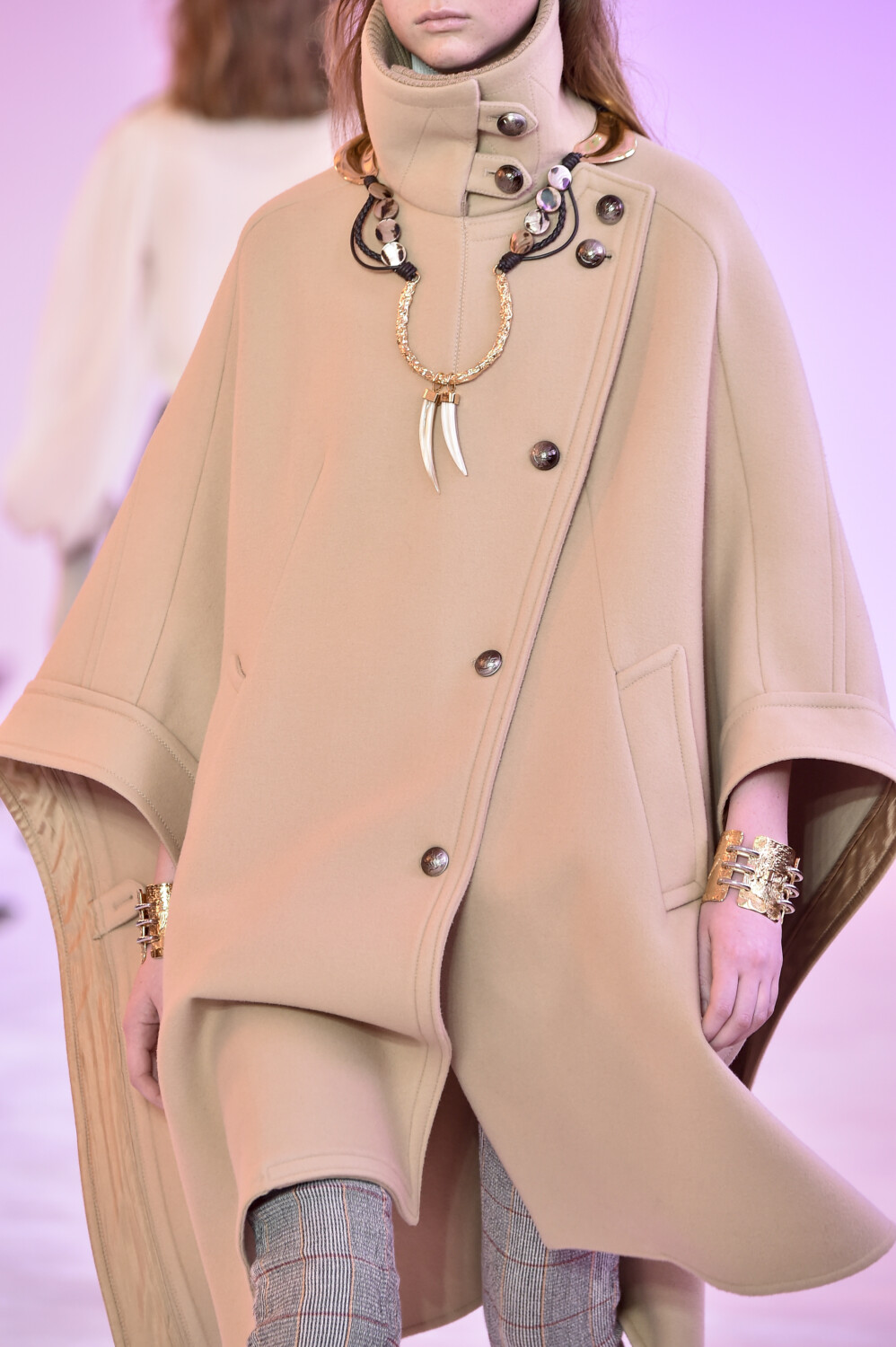Above: a cape from the FW19 collection by Natacha Ramsay-Levi. The Chloé cape, firstly introduced in 1974 and endlessly re-interpreted in the following years in soft wool for the winter or in whirls of light silk for the summer; it embodies a sense of fluidity and freedom of movement – a signature trait of the Chloé style, alongside the silk blouse and the silk trousers.
The designer closes the Chloé chapter for a new creative path
Just a few months away from Bali Barret’s farewell to the house of Hermès, an important chapter closes within the creative direction of Chloé, the fashion Maison under the aegis of the Swiss fashion group Richemont.
Despite the positive and fertile 4-year-long experience that allowed her full freedom of expression and led her to reach goals to remember, Natacha Ramsay-Levi has decided to step down as Creative Director for some time now, because of the need to undertake a new creative path on her behalf in favor of new opportunities.
“During my last show in October, I have evoked the idea of risk as a possible value, and in this continuity, I allow myself the fantasy of believing in change”, writes the designer. “Over the last months of health, social and economic turmoil, I have given thoughts to the changes I want to see in our industry and how to better align them with my own creative, intellectual and emotional values. It is this reflection that makes me consider my future differently and desire to pursue new opportunities”.
Strong of a feminist, philosophical and cinematographic past on her shoulders, as well as of a massive education as Nicolas Ghesquière’s right arm at the houses of Balenciaga and Louis Vuitton, Ramsay-Levi gave full voice to her creativity and to her personal and very recognizable modus operandi, characterized by meticulous attention to details: a feature which enables her to translate the signature refinement of Haute Couture into a more democratic language, that can be more easily understood by the women from any social context and therefore used in their lived realities.
After all, this is an approach which is perfectly in sync with the character of the Chloé house itself, for it was founded in 1952 as an alternative to the firm formalities of Haute Couture: it proposed the Ready-to-Wear (Prêt-à-Porter) – Chloé was one of the first houses to do this – and offered a wardrobe which was elegant and feminine, yet cheeky and comfortable at the same time. 1957 is the year of the first fashion show by Chloé, while the following ones were held at other Left Bank cafés, with the press which was sitting “around tables drinking café au lait… while the models weaved in and out of the tables”, the New York Times wrote at that time. A curious fact, maybe apparently insignificant, if it weren’t for the fact we are in the 1960’s Paris, in those same venues that were the backdrop to the counter-cultural revolution of the time – an aspect which is fundamental to understand the character of Chloé.
Chloé personifies the aspirations of the girls and the young women of the time: its romantic, cool, modern and occasionally “boyish” style marks a huge success. It will conquer new generations of Chloé aficionadas throughout the decades, with an aesthetic in constant evolution thanks to the multitude of young talents the founder Gaby Aghion will admit under her wing – from Gérard Pipart to Graziella Fontana to Maxime de La Falaise – and the creative directors who have been succeeding one another up to the present day – including Karl Lagerfeld, Martine Sitbon, Stella McCartney, Phoebe Philo and Clare Waight Keller.
Natacha Ramsay-Levi’s femininity is overflowing, impressive, made of different facets: it’s all about bold and womanly power, which is conveyed by clashing contrasts between vivid prints, chromatic combinations as well as diversified textures. She is more likely to evoke the 70’s transgressive charm with a rich bohémien touch and safari inspirations, rather than the classic and structural purity, which is instead much more evident in Hannah MacGibbon’s (creative director from 2008 to 2011) and Clare Waight Keller’s collections (at the helm of the house from 2011 to 2017). Her freedom of expression – which results in freedom of the spirit definitely – is mitigated by intellectual experiments and masculine cuts. Ramsay-Levi’s personal interpretation and unique vision have certainly added important pages within Chloé’s history book. Now, a question inevitably comes up: who is next?
We gathered some of the most beautiful pieces from Natacha Ramsay-Levi’s collections for Chloé throughout the years, which are interpreters of the house’s distinctive traits. Take a look at the photo galleries on the left!
These photos are only a low resolution demonstration.
If you want to use the hight resolution, you must subcribe to our images database. You may ask us any commercial information simply filling out our Contact Form. For editorial use only.
Follow us with the hashtag #showbitcom




